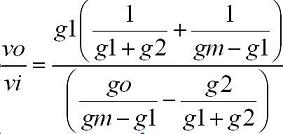Rcy
Junior Member level 1
I have designed a folded cascode opamp and need to convert it to a inverting amplifier with a gain of 10.... I'am getting a closed loop gain of 10 when i put the a resistor(R=1K) in series with my input voltage source and feed back resistance (Rf=200K).....The designed folded cascode opamp(without feedback has an output resistance of 0.9Mega ohm when calculated).... so is my resistance value justifiable???
